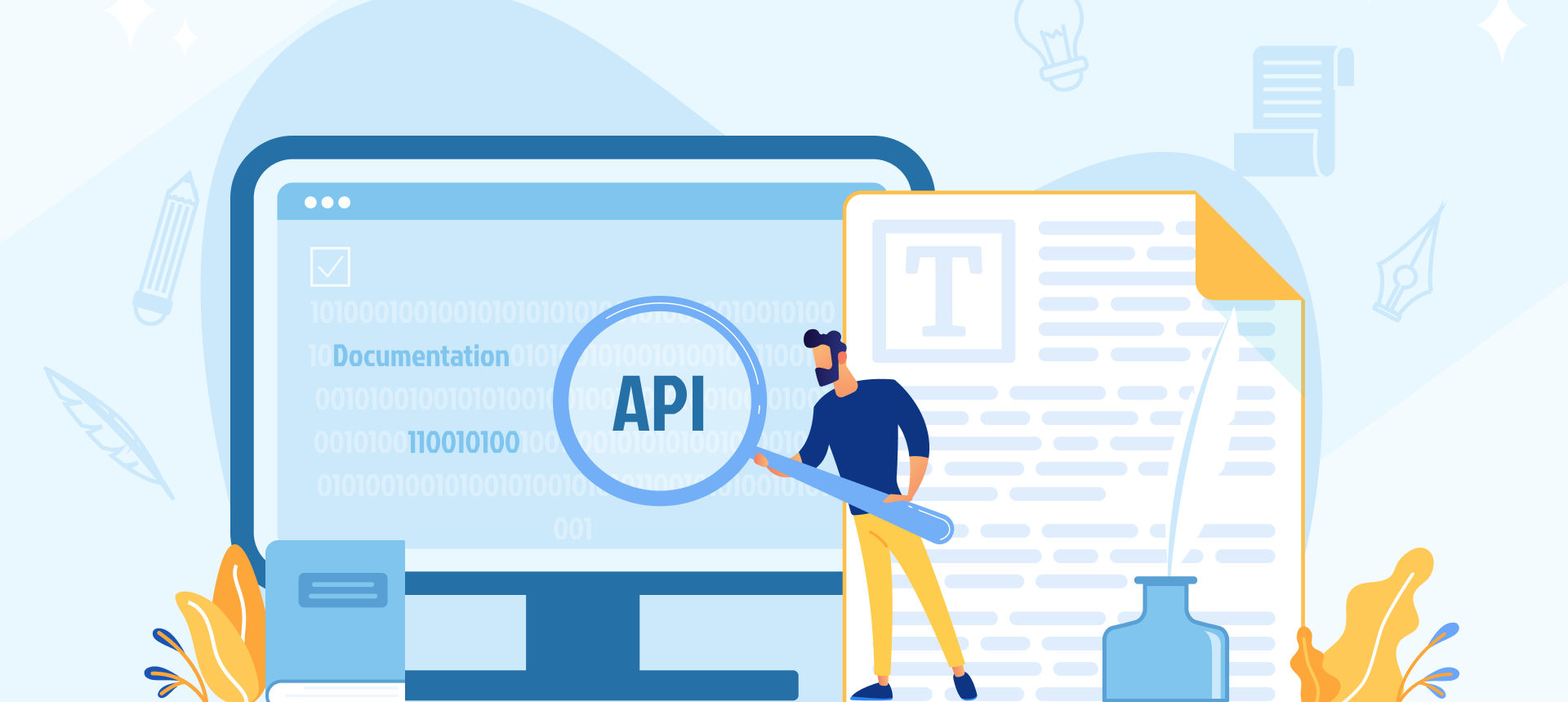Mastering the Art of API Documentation: Best Practices and Pitfalls to Avoid
 Adeoye David
Adeoye David
Introduction
API documentation serves as a crucial bridge between developers and the functionality of software systems. It provides clear guidance on how to interact with an application's backend services, enabling seamless integration into various projects. In this tutorial, we'll delve into the essentials of API documentation, uncovering best practices and highlighting common pitfalls to steer clear of.
What You'll Learn After This Tutorial
By the end of this tutorial, you'll have a solid understanding of:
The importance of API documentation in modern software development.
Key components and structure of effective API documentation.
Best practices for writing clear, concise, and user-friendly documentation.
Common mistakes to avoid when documenting APIs.
Tools and resources to streamline the documentation process.
Key Terms to Understand Before Proceeding
Before diving into the intricacies of API documentation, let's clarify some key terms:
API (Application Programming Interface): A set of rules and protocols that allows different software applications to communicate with each other.
Endpoint: A specific URL within an API that performs a particular function or accesses a specific resource.
Request Methods: HTTP methods (such as GET, POST, PUT, DELETE) used to perform different actions on resources.
Parameters: Data sent with an API request to specify additional information, such as query parameters or request body.
Understanding the Purpose of API Documentation
API documentation serves as the lifeline between developers and the functionality of software systems. At its core, it acts as a comprehensive guidebook, detailing how developers can interact with an application's backend services. Think of it as a map, providing clear directions on how to navigate the intricate pathways of an API. Without proper documentation, developers are left to wander in the dark, struggling to understand the inner workings of the system they're trying to integrate with.
The Importance of API Documentation in Modern Software Development:
In the rapidly evolving landscape of modern software development, APIs (Application Programming Interfaces) play a foundational role in enabling seamless communication and integration between disparate systems and applications. API documentation serves as the primary interface through which developers interact with and understand the functionalities of these APIs. Its significance extends far beyond mere documentation; it embodies the cornerstone of effective collaboration, innovation, and efficiency within development teams and across the developer community. Here's why API documentation is paramount:
Clarity and Guidance: API documentation serves as a roadmap, providing developers with clear and concise instructions on how to interact with an API's endpoints, request methods, parameters, and response formats. It eliminates ambiguity and empowers developers to navigate the complexities of the API ecosystem with confidence.
Accelerated Development: Well-documented APIs expedite the development process by reducing the time and effort required for developers to integrate third-party services or build upon existing functionalities. Developers can quickly understand how to leverage the capabilities of an API without the need for extensive trial and error, thereby accelerating the pace of development cycles.
Enhanced Developer Experience: Just as user experience is crucial for end-users, developer experience (DX) is equally vital for developers. Clear and intuitive API documentation enhances DX by providing developers with a seamless onboarding experience, fostering a positive perception of the API, and promoting continued usage and adoption.
Facilitated Collaboration: API documentation serves as a universal language that facilitates collaboration among developers, regardless of their geographical location or organizational affiliation. By providing a standardized reference point, it enables developers to communicate effectively, share knowledge, and collaborate on projects with greater efficiency and cohesion.
Reduced Support Overhead: Comprehensive API documentation minimizes the need for developers to seek external support or rely on trial-and-error experimentation to understand how to use an API effectively. By addressing common questions, providing troubleshooting guidance, and offering real-world examples, it mitigates potential roadblocks and reduces the burden on support channels.
Compliance and Governance: In regulated industries such as finance, healthcare, and government, API documentation plays a critical role in ensuring compliance with industry standards, security protocols, and data privacy regulations. It serves as a vital artifact for audits, certifications, and governance processes, demonstrating adherence to best practices and regulatory requirements.
In essence, API documentation serves as the linchpin of modern software development, fostering innovation, collaboration, and efficiency across the development lifecycle. Its importance cannot be overstated, as it not only facilitates the integration of disparate systems but also underpins the foundation of a thriving developer ecosystem driven by clarity, accessibility, and interoperability.
Key Components of Effective API Documentation
Effective API documentation comprises several essential components, each playing a vital role in ensuring clarity and usability. First and foremost, it includes a clear description of API endpoints and their respective functionalities. These endpoints act as entry points into the API, allowing developers to perform specific actions or access particular resources. Additionally, API documentation should provide detailed explanations of request and response formats, guiding developers on how to structure their requests and interpret the responses they receive.
Best Practices for Writing Clear and Concise Documentation
When it comes to crafting API documentation, simplicity is key. Developers come from diverse backgrounds and skill levels, so it's essential to use language that is accessible to a wide audience. Utilizing plain language and avoiding unnecessary technical jargon ensures that even novice developers can understand and utilize the documentation effectively. Furthermore, organizing information in a logical and hierarchical manner enhances readability and comprehension.
Common Pitfalls to Avoid When Documenting APIs
Despite its importance, API documentation is often plagued by common pitfalls that can hinder its effectiveness. One such pitfall is incomplete or outdated documentation, which can lead to confusion and frustration among developers. Ambiguous or confusing language is another common issue, making it difficult for developers to understand how to interact with the API. Additionally, neglecting to include error handling information can leave developers stranded when things inevitably go wrong.
Tools and Resources to Streamline the Documentation Process
API Documentation Platforms: Utilize dedicated platforms such as Swagger, Postman, or Apiary, which offer features like auto-generating documentation from code or providing collaborative environments for documentation creation and review.
Version Control Systems: Leverage version control systems like Git alongside platforms like GitHub or GitLab to manage changes to documentation, enabling collaboration among team members and ensuring version history integrity.
Documentation Generators: Explore tools like Sphinx (for Python), Javadoc (for Java), or JSDoc (for JavaScript) to automatically generate API documentation from source code comments, reducing manual effort and ensuring consistency.
Style Guides and Templates: Adopt established style guides or create customized templates to maintain consistency in documentation formatting, language usage, and content structure.
Interactive Documentation Tools: Integrate tools like ReadMe or ReDoc to create interactive API documentation with features like code snippets, live examples, and search functionality, enhancing user engagement and understanding.
Feedback and Analytics Tools: Implement feedback mechanisms and analytics tools within documentation platforms to gather user insights, track usage patterns, and identify areas for improvement, facilitating iterative enhancements to documentation quality.
Collaboration Platforms: Utilize collaboration platforms such as Confluence, Notion, or Google Docs to facilitate real-time collaboration among team members during the documentation creation and review process, fostering efficient communication and knowledge sharing.
By leveraging these tools and resources, developers can streamline the documentation process, enhance documentation quality, and ensure that API users have access to accurate, up-to-date, and user-friendly documentation.
Conclusion
In conclusion, effective API documentation is not just a nicety—it's a necessity. By providing clear, concise, and user-friendly documentation, developers can empower others to leverage their APIs with confidence and ease. Through careful attention to best practices and a keen eye for common pitfalls, developers can ensure that their API documentation serves as a valuable asset to the developer community at large.
FAQ
Q: Why is API documentation important?
A: API documentation serves as a roadmap for developers, guiding them on how to interact with software systems and facilitating seamless integration into their projects.
Q: How can I ensure my API documentation is user-friendly?
A: Focus on clarity, simplicity, and consistency in your documentation. Use plain language, provide ample examples, and organize information in a logical manner.
SUMMARY
Crafting clear and concise API documentation is pivotal for successful software development projects. To achieve this, adhere to best practices and steer clear of common pitfalls:
Best Practices:
Language Simplicity: Utilize simple and consistent language to ensure accessibility for all developers.
Logical Organization: Arrange information hierarchically for easy navigation and understanding.
Real-World Examples: Provide practical use cases to illustrate the functionality of the API.
Interactive Elements: Incorporate API explorers or sandbox environments to offer hands-on experience.
Visual Aids: Enhance comprehension with diagrams or flowcharts to visually represent complex concepts.
Common Pitfalls to Avoid:
Incomplete or Outdated Content: Keep documentation current and comprehensive to avoid confusion.
Ambiguity: Ensure clarity by avoiding ambiguous or confusing language.
Formatting Consistency: Maintain uniformity in formatting and style throughout the documentation.
Error Handling: Include detailed information on error handling to assist developers in troubleshooting.
Avoiding Technical Jargon: Steer clear of overly technical language that may alienate novice users.
By adhering to these best practices and avoiding common pitfalls, developers can create API documentation that empowers users to confidently leverage their APIs, fostering smoother integration and enhanced developer experience.
Subscribe to my newsletter
Read articles from Adeoye David directly inside your inbox. Subscribe to the newsletter, and don't miss out.
Written by

Adeoye David
Adeoye David
I'm David, a passionate backend developer and avid technical writer dedicated to crafting clean, efficient, and scalable software solutions. With a deep-rooted love for code and a knack for communicating complex technical concepts in a clear and concise manner, I thrive in the intersection of technology and writing. As a backend developer, I specialize in building robust and reliable server-side applications using technologies like Node.js, Express.js, and MongoDB. Whether it's architecting scalable APIs, optimizing database performance, or implementing secure authentication mechanisms, I'm always up for the challenge of tackling backend complexities. Beyond my coding endeavors, I find immense joy in the art of technical writing. I believe that effective documentation is just as important as writing code—it empowers users, fosters collaboration, and ensures the long-term success of software projects. From comprehensive API guides to in-depth tutorials, I strive to create informative and accessible content that educates and inspires fellow developers. On this platform, you'll find a blend of my technical insights, coding adventures, and musings on software engineering best practices. Whether you're a seasoned developer seeking to deepen your knowledge or a newcomer navigating the world of backend development, I invite you to join me on this journey of exploration and discovery.